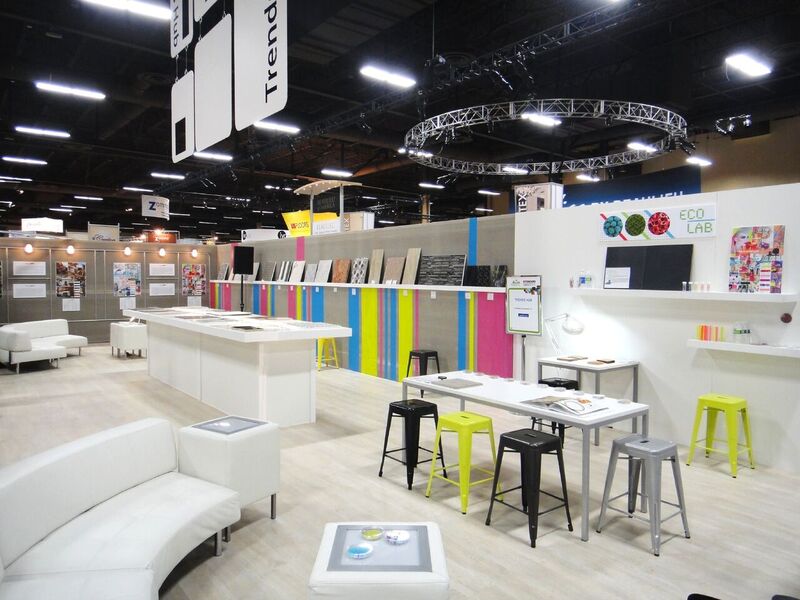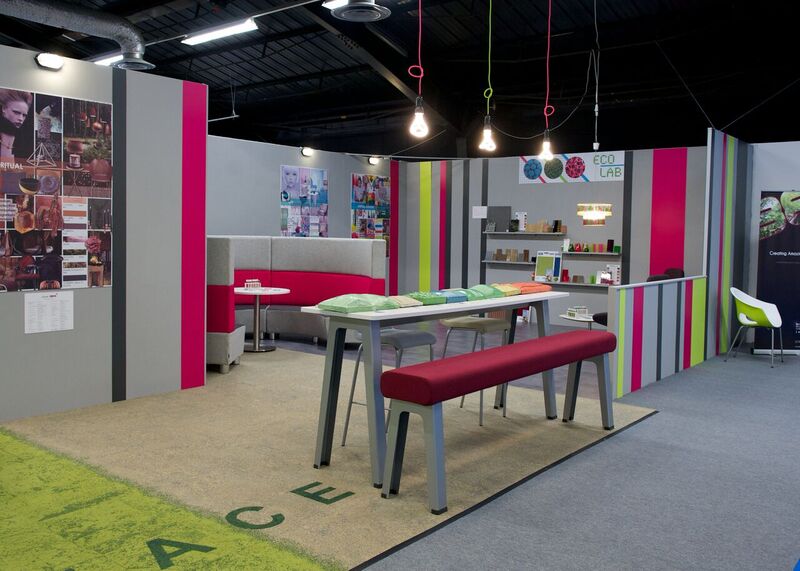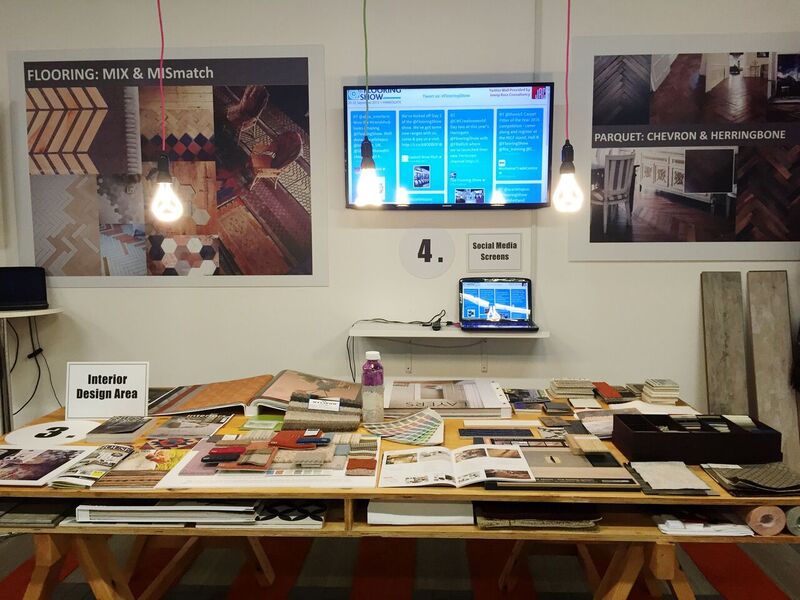Furnishing International caught up with Founder of Scarlet Opus, Victoria Redshaw who shares treasured insight into what has become one of the most intriguing and important businesses to be connected to the design world – trend forecasting.
Words: Natasha Scire
Scarlet Opus – a name that comprises of the joining of an emotion and an aim. ‘Scarlet’ being the colour of passion and ‘Opus’ being mostly associated with the movement of music, is also correlated with one’s greatest work. Here, Founder of Scarlet Opus, Victoria Redshaw shares with us what it is like to always be looking into the future through the valuable process of trend forecasting.
After starting her creative journey at Art College and then going on to study a Bachelor of Science in Textile Design, it wasn’t long before Redshaw recognised the usefulness of trend forecasting in the interior sector. With minimal contacts, nominal experience in running a company and a vague business plan, Redshaw spent years developing her forecasting skills in order to bring the most accurate and unsurpassed trend information, now paramount to the design industry.
Tell us about Scarlet Opus – where did it all begin?
I started Scarlet Opus as a sole trader twelve years ago. I had reached a point in my career where I felt I had the confidence and contacts to finally strike out on my own, and in truth I was finding corporate life restrictive, repetitive and slow in terms of decision making. I wanted to have a much greater degree of control over the work I participated in; a more agile approach to decision making, an adaptive approach in terms of business direction and, perhaps most crucially, control over how I spent my time – a precious commodity I am very mindful of.
As a sole trader I quickly realised that working on my own was not for me and that working with freelancers would both make my working life more fun and enable me to take on more projects. So I extended and shared my workload with a couple of designers, but inviting Phil Pond to join Scarlet Opus was the real turning point for the business’ growth. Phil gave the company direction [and continues to give] its internal dynamism that keeps it morphing and fluid. With his sales and marketing background he was able to scan the commercial horizon and see the wide and varied applications for trend forecasting – its amazing potential to inform better decisions relating to everything from product development, buying, merchandising, marketing and store design to guiding and informing the work of homebuilders, hoteliers and inspiring the work of interior designers.
Together we built a small but brilliant in-house team and developed a portfolio of freelance experts (who we refer to as Scarlettes) and we now offer a broad range of trend forecasting related services. In addition to the trend reports that have always been our core business, the team now spends a huge amount of time designing and delivering trend seminars, workshops, tours, as well as designing and curating Trends Hubs at exhibitions and shows around the world.

What does Scarlet Opus do?
As a trend forecasting agency, we provide insight into the future wants, needs and desires of consumers. We provide manufacturers, retailers, product designers, interior designers, home builders, architects and the media with trend forecasting information, with a specific focus on the interiors sector. We present trends two years ahead of real time, so at the time of writing it is Spring 2017 and we are putting the finishing touches to our Spring/Summer 2019 forecast, with some initial work already done on our Autumn/Winter 2018/19 forecast.
We also use our trend forecasting expertise to review and edit the current product ranges of manufacturers and retailers to inform store design, merchandising, exhibition booth design; and even the vocabulary used by sales representatives when presenting new collections. Our defining strength is the ability to not only forecast design trends and changing attitudes amongst consumers, but also translate those broad themes and issues into very specific product or market guides.
Yes, we provide information about colour, pattern and materials etcetera, but we are also able to filter the information right down to what it will mean for a particular product sector, basically providing information on what to manufacture or sell.
Often the person or department who commission us are not ‘creatives’ as such, so our reports and presentations are written in an accessible style, full of actionable suggestions and loaded with images. I think this is one of the main reasons clients seek us out and stay with us season after season – they get such a deep, comprehensive and detailed understanding of future design trends that enables them to make decisions and investments with real confidence.
Moving away from client boardrooms and thinking instead about presenting trend seminars at exhibitions, we aim to generously inform and inspire audiences so they leave the seminar theatre genuinely excited to return to work and implement aspects of what they have heard and seen.
What is forecasting and how do you do it?
At Scarlet Opus the process we use begins by collating a huge amount of information relating to future planned events. As a team we discuss architectural projects, hotel openings, film productions, museum shows, and a myriad of other things due to take place over the next two to three years. We also assess social change; examine popular culture, and the economic and political climate in a broader sense. And we take into consideration the new work and collections of designers and manufacturers around the world. We analyse all of this information, also taking into account current global events and issues, in order to translate all of this information into a prediction of future design trends.
From our research we know what will be on people’s radars at a given point in the future and how this will likely affect their wants, needs and desires in broad and also very specific terms. All of the pieces of information that we gather together, assess and translate are like pieces of a jigsaw that fit together to form an ever growing and more complete picture of future trends. We then begin to build colour palettes and establish the ‘look’ and key design characteristics, mood and materials etcetera, relating to each of the season’s trends. It is a fascinating organic process that I have come to think of as a social science.

How does society and the environment affect forecasting?
People are often surprised to learn that the mood in society can have an effect on design and even colour trends, and that it is essential for our team to consider this as part of our forecasting process. For example, the financial crisis changed consumer attitudes, spending patterns, decision making processes, priorities and tastes. The mood in society shifted significantly and design tastes shifted too – ostentatious ‘bling’ no longer felt appropriate and fell from favour.
Strange as it may seem this affected colour, surface finish and metallic trends e.g. high shine gold, which had previously been hugely popular, was replaced by warmer, earthen metals like brass and copper. Generally there was a move post financial crisis to buy less but buy better. Consumers explored the virtues of restraint, moderation and an edited-down approach as well as authenticity. It became more important that products offered longevity in terms of quality and style, and greater ecological awareness drove a demand from consumers to know where, by whom and out of what the products they bought had been made. And they wanted to speak directly to retailers and manufacturers via social media. Transparency became essential.
From a marketing perspective the whole concept of dictating what this season’s ‘must have’ item is now seems totally out of sync with the modern consumer’s mindset. Retailers that want to be successful and truly connect with end consumers have to refocus their message and offer products that answer the genuine needs and wants of consumers, rather than trying to create a pseudo desire for products they do not really need.
Why is trend forecasting important? How do you think designers and makers can benefit from understanding more about it?
Outside of the design industry few people seem to know about the work of futurists and trend forecasters or how our predictions help to guide the designing, manufacturing and buying activities of well known product brands and retailers. Certainly very few end consumers have any idea that the vast majority of the products they buy have been created in line with the predictions of trend forecasting agencies like ours, and that this process of forecasting all started a couple of years before the products ever became available for them to buy in a shop or online.
However, we do not want to dictate what the trends should be or influence the essence of the personal design direction of designer’s work; certainly we do not want to contribute to greater homogenization. Rather our aim is to help designers and makers understand how their work fits into future trends, which will allow them to make more informed decisions with regards to both their products and business. If you know what the design trends are going to be one or two years from now then you have more time to plan, experiment, design and make before a product or collection launch.
Trend forecasting can help guide what materials to consider working with; what colours to include in or drop from, help anticipate what will sell best, and in turn inform the ordering of raw materials etcetera. Of course our trend reports also help designers and makers get their marketing language and stories right so that they resonate with consumers. Above all, it is inspirational, thought-provoking information. We fully appreciate that designers and makers want to be free rather than constrained in creative terms, but they also need to ensure their products will sell. Trend forecasting is therefore a tool that can be used to give designers and makers a competitive advantage whilst maintaining creative integrity.

Tell us about your team. What kind of skills do they need to be equipped with to be able to forecast?
Being a good trend forecaster requires an unusual mix of skills that are creative and academic. I believe that the best trend forecasters have a design background and training, as well as a capacity for researching, processing, analysing and retaining large amounts of information. It is essential to have a mix of people with diverse specialisms, and that means having access to carefully selected graphic designers, exhibition booth designers, IT specialists, bookkeepers etcetera.
I am a big believer in allowing people to do what they are best at and enjoy most. People produce their best work when they are happy and enthusiastic about the tasks they have been set, so it makes sense to me to allocate work in accordance with this ethos.
What are some current trends in the design industry?
As our lives become more complex and dominated by technology many consumers are reaching for more grounded lifestyles, reconnecting to nature in an attempt to find balance in our fast paced modern world. Biophilia (our basic human desire to connect with nature) is increasingly important in design terms because natural materials, patterns, shapes and textures are reassuringly familiar and authentic – key qualities at a time of constant change, information overload and mistrust. This has design implications for wellbeing in the workplace as well as for the hospitality sector and residential interior design.
What are some of the trends that you forecast for the next couple of years?
One of the most interesting areas we are researching relates to progressive technologies and developments in new sciences, such as Synthetic Biology. It is driving intense debate about Transhumanism and our increasingly intimate relationship with technology. Technology will enable us to become digital nomads – working and living anywhere we choose, which will have a huge effect on everything from kitchen design to workplace furniture design. We are also constantly researching developments in smart home technology, 3D and 4D printing and augmented reality, which in turn raise issues connected with privacy, control, access and the new directions that consumerism will take. We are also forecasting a greater need for home products that answer the issues associated with living in smaller, more compact spaces in cities.

What portion of your forecasting depends on colour trends? How important is colour in your work?
From cookware manufacturers to flooring manufacturers, most of our clients are focused on first gaining a deep understanding of future colour trends from us and then guidance on how best they can apply colour forecasts to their products. So forecasting colour trends is a hugely important part of our work.
Colour is normally the first thing you notice about a product and it can win or lose a sale. Interior products in particular have a visual relationship with other products in the same space, and colour helps forge these relationships, whether they are harmonious, balanced or contrasting relationships. Colour affects mood, it is emotional and is a core component in our forecasts – everything pivots on the colour palettes we forecast.
I understand you’re going to be at Decor + Design this year, why do you think it is important for visitors to attend shows like this?
For visitors such as interior designers and retailers it is incredibly useful to visit shows like Decor + Design to not only source products and see what is currently trending in the interiors sector, but also gather a wealth of information about future trends.
scarletopus.com


